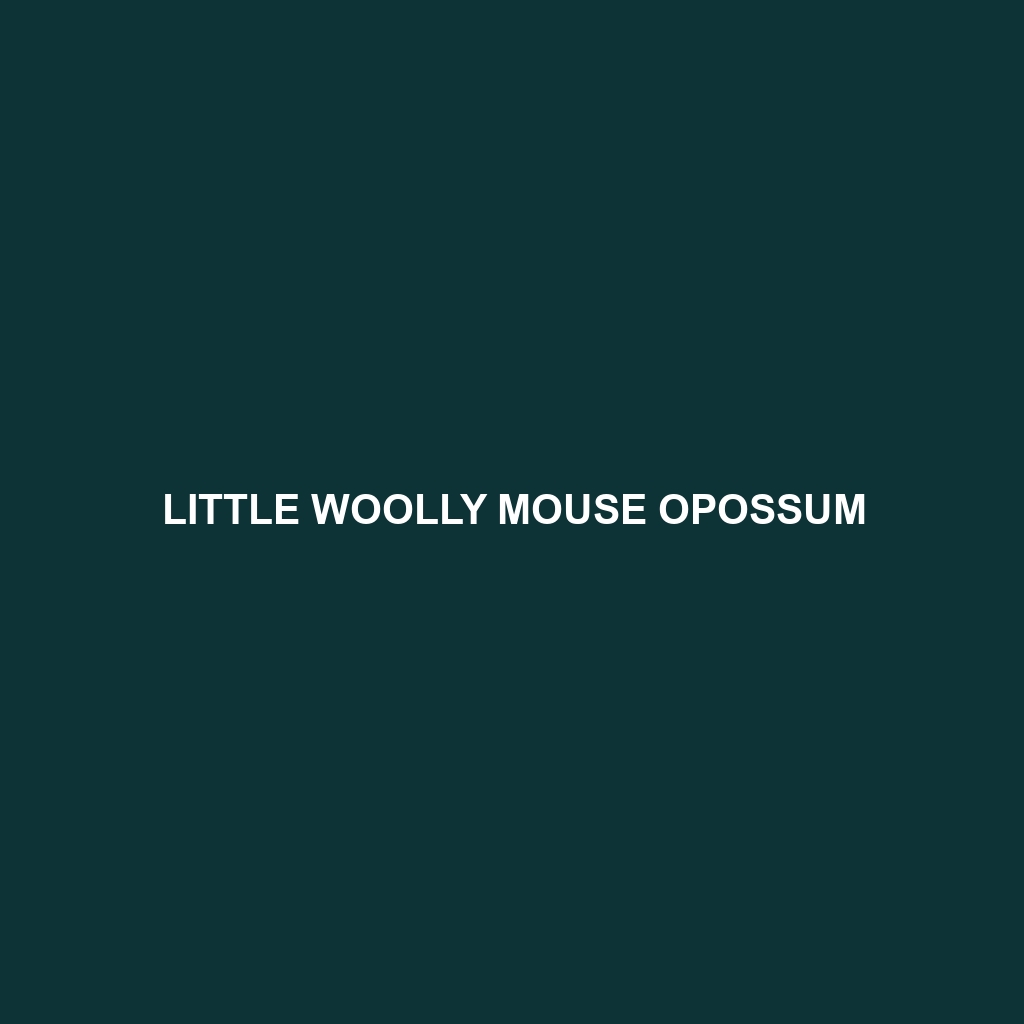Little Woolly Mouse Opossum (Micoureus minutus) Detailed Description
The Little Woolly Mouse Opossum, scientifically known as Micoureus minutus, is a small marsupial native to the tropical and subtropical regions of Central and South America. Despite its diminutive size, this nocturnal creature plays a significant role in its ecosystem, serving as both a pollinator and a prey species. With its soft fur, agile movements, and resourceful nature, the Little Woolly Mouse Opossum is a remarkable example of adaptability and survival in the wild.
Physical Characteristics
Size: The Little Woolly Mouse Opossum is a small marsupial, typically measuring about 10 to 15 centimeters (4 to 6 inches) in body length, with a tail that can be nearly as long as its body. It generally weighs between 20 to 40 grams (0.7 to 1.4 ounces).
Coloration: This opossum has dense, woolly fur that ranges in color from grayish to brown, providing excellent camouflage in its forest environment. The underbelly is usually lighter, often white or cream-colored.
Special Features: One of the notable features of the Little Woolly Mouse Opossum is its prehensile tail, which it uses skillfully to grip branches and navigate through the trees. Additionally, it has large, dark eyes that enhance its night vision and sensitive whiskers to detect its surroundings.
Behaviors
Social Interactions: The Little Woolly Mouse Opossum is generally solitary, coming together only for mating. Each individual maintains its own territory and builds nests out of leaves and twigs in tree hollows or dense vegetation.
Feeding Habits: As an omnivore, this opossum has a varied diet that includes fruits, insects, small vertebrates, and even nectar, which also makes it an important pollinator for various plant species.
Ecological Roles: The Little Woolly Mouse Opossum plays a crucial role in its ecosystem. By feeding on insects and small animals, it helps control their populations, and through its consumption of fruit and nectar, it aids in seed dispersal and pollination.
Habitats and Adaptations
Habitats: This species is typically found in tropical and subtropical forests, including rainforests, cloud forests, and secondary growth forests. It prefers areas with dense vegetation that offer plenty of cover and nesting sites.
Adaptations: The Little Woolly Mouse Opossum has several adaptations that aid its survival. Its nocturnal habits help it avoid many predators, while its prehensile tail and agile limbs allow it to move adeptly through the forest canopy. Its keen sense of smell and large eyes are essential for locating food and navigating in low light.
Conservation Status
The Little Woolly Mouse Opossum currently holds a status of “Least Concern” according to the International Union for Conservation of Nature (IUCN). However, it faces threats from habitat loss due to deforestation and land conversion for agriculture. Conservation efforts focus on protecting its natural habitat and ensuring sustainable land use practices.
Fun Facts
Despite its name, the Little Woolly Mouse Opossum is not closely related to mice; it’s a member of the marsupial family, which includes kangaroos and koalas.
This opossum has an impressive ability to enter a state of torpor, a form of short-term hibernation, to conserve energy when food is scarce.
The Little Woolly Mouse Opossum is known for its acrobatic prowess, often seen hanging upside down by its tail while foraging.
The Little Woolly Mouse Opossum may be small, but its role in the ecosystem and its unique adaptations make it a fascinating subject of study and admiration. Protecting this diminutive marsupial ensures the health and diversity of the forests it inhabits.
